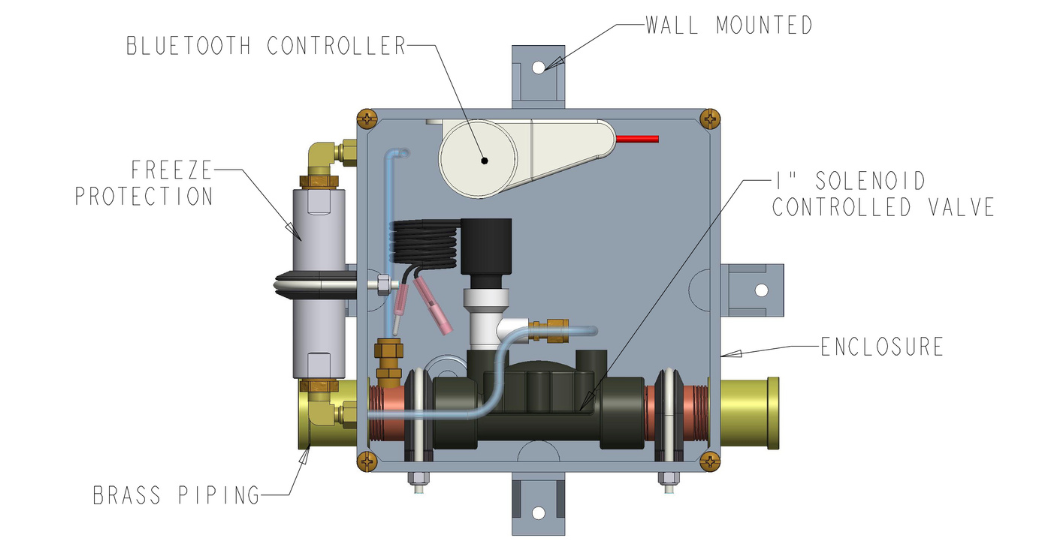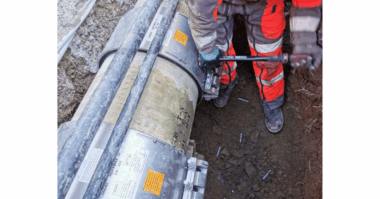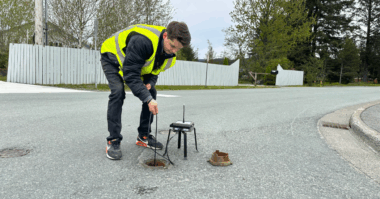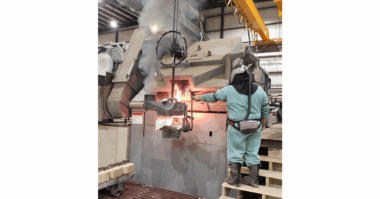Water lines are sized to carry enough drinking water for the maximum occupant capacity of a building. When there are not enough people using the water, it sits stagnant in the distribution system. As water ages in the building’s piping, disinfectants (such as chlorine) added to protect the water supply diminish. In as little as three days water can become void of chlorine disinfectant, thus making the water less safe for consumption from taps and water fountains.
A commercial building is very much like a water utility’s distribution network, sharing the following components:
A Source – A water utility’s source is the start of a distribution system. The source could be a reservoir, wells, a river, or a combination of these. Water is drawn from the source and delivered to the water treatment plant. From the treatment plant water is stored in tanks or delivered to commercial and residential users by way of an intricate piping system. In some smaller communities, water is supplied by larger water utilities through a system of interconnects. The water source for a commercial building is simply the mainline from the water utility.
Tanks – Water utilities erect storage tanks to reduce the energy needed to move water across the network and help maintain water pressure throughout the system while also meeting demand in peak hours. Similarly, commercial buildings have one or more water tanks to accomplish the same goals. Skyscrapers have a series of tanks with a series of pumps between them as the weight of the water would be nearly impossible to rise 100 stories with a single pump.
Miles of pipes – Pipes of various sizes are needed to move water efficiently throughout a water system. There are legs that go in the direction of zones separated by barriers. Barriers for utilities may be bodies of water, mountain ranges or even train tracks. For buildings, zones are typically separated by floors. While Los Angeles has 6,730 miles of mainline, the tallest building in 2020, the Burj Khalifa in Dubai, is over a half a mile in height with 163 stories and 2,716 feet tall. It holds 62 miles of water pipe to deliver an average daily supply of 249,908 gallons of water.
Pumps and Valves – Water utilities and commercial buildings both use pumps and valves to control the flow of water throughout the system.
These shared components are important to recognize because the level of attention a utility gives to water quality is much more complex and regulated than it is for a commercial building. Water utilities are required to take water samples throughout their distribution network to ensure the water is safe for drinking. If the quality of the water falls outside of the regulation standards set by the Environmental Protection Agency, the utility must act.
The problem of aging water for utilities is a constant concern particularly with population loss. Vacancy rates can leave a city’s water supply and demand out of balance. In other words, there is more pipe and water in the system than is needed. When this occurs, water can become stagnant and problematic.
Another common challenge for many metropolitan areas is population density spreading to suburbs. As a builder prepares a neighborhood for hundreds of new homes, the water supply must be adequate for the neighborhood’s full occupancy. It can take years to finish construction and more to fill every new home. During this time, the water delivered is more than the usage and cannot be consumed before the disinfectant additives dissipate. As a result, the water can become unsafe if not monitored and corrected.
While utilities have a few options for monitoring and regulating water quality, the simplest and most common method is time-based flushing. These can be mobile or permanent devices that flush water in order to maintain consistent chlorine disinfectant levels. Through lower velocities, automated flushing solutions reduce the potential for stirring up sediment in delivered water, while pulling water with greater concentrations of disinfectant through the building’s piping. If a particular zone in the distribution system has less water consumption than the pipes were intended to deliver, most devices can be set on a timer to ensure fresh water routinely enters the specified zone. Many utilities have been using the Hydro-Guard® Flushing System equipped with a more sophisticated S.M.A.R.T. (System Management Assisted by Remote Telemetry) option that automatically flushes based on data acquired by actively monitoring various water quality conditions such as chlorine residual levels, temperature, pH, turbidity, pressure and flow.
The standard current procedure for flushing a commercial building is very labor-intensive. It can take an entire weekend to flush a high rise, and so it often goes undone. Commercial buildings can, and should, flush their systems regularly. A simple Hydro-Guard flushing unit is easy to install, cost effective, and can be fully automated if desired. Most importantly it will maintain water quality regardless of the circumstances building owners may face over the lifetime of its occupants.
The Hydro-Guard industrial flusher monitors the chlorine levels in a water supply. If the chlorine levels dip below the desired value set by the user, the incorporated valve will open and flush the water in the pipe until the chlorine returns to a safe level. Integrating this technology into the plumbing of a building ensures the safety of the building occupants, reducing the liability of the building owners. It also mitigates the risk of damaging fixtures, faucets and other equipment while preparing them for a manual flushing event.
The only real way to ensure people’s safety and a building’s water integrity is to incorporate necessary technology to read the quality of water as it enters the building and throughout different zones and flush accordingly.




